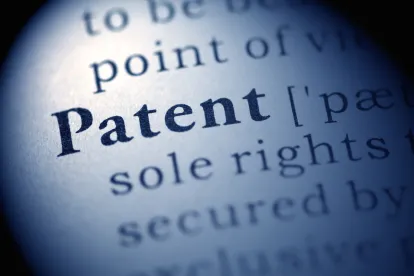Holding
On October 12, 2021, the Federal Circuit affirmed in two separate cases involving Traxcell Technologies. In Traxcell Technologies, LLC v. Sprint Communications Co. LP and Verizon Wireless, No. 20-1852, __ F.4th__ (Fed. Cir. Oct. 12, 2021), the Federal Circuit affirmed the district court’s grant of summary judgment to Sprint, agreeing with the district court regarding claim construction, that several of Traxcell’s claims are invalid as indefinite, and that there were no genuine issues of material fact infringement. In another opinion by the same panel on the same day, Traxcell Technologies, LLC v. Nokia Solutions and Networks OY, No. 20-1440, __ F.4th__ (Fed. Cir. Oct. 12, 2021), the Federal Circuit affirmed the district court’s grant of summary judgment of no infringement, again agreeing with the district court’s claim construction. Judge Prost wrote both opinions, joined by Judges O’Malley and Stoll.
Background
Both lawsuits involved U.S. Pat. Nos. 8,977,284 (“the ’284 patent”), 9,510,320 (“the ’320 patent”), and 9,642,024 (“the ’024 patent”). The lawsuit against Sprint also included U.S. Pat. No. 9,549,388 (“the ’388 patent”). All share a specification and a 2001 priority date. The patents relate to self-optimizing wireless network technology.
Method claim 4 of the ’320 patent reads:
4. A method of managing a wireless radio-frequency (RF) network, the method comprising:
coupling in communication, at least one radio-frequency transceiver and an associated at least one antenna … ;
at a first computer…generating an indication of a location… ; … coupling a second computer in communication with the first computer; … ; and the first computer denying access to the indication of location to the second computer if the no access flag is set.
(emphasis in opinion)
System claim 1 of the ’024 patent reads:
1. A system including:
one or more radio-frequency transceivers and an associated one or more antennas…; and
a computer coupled to the one or more radio-frequency transceivers programmed to locate the one or more mobile wireless communications devices and generate an indication of a location…
(emphasis in opinion)
Means-plus-function claim 1 of the ’284 patent reads:
1. A wireless network comprising:
a) at least two wireless devices, each said wireless device communicating via radio frequency signals;
b) a first computer programmed to perform the steps of:
1) locating … ;
2) routinely storing performance data and a corresponding location for said at least one wireless device in a memory;
c) a radio tower adapted to receive radio frequency signals from, and transmit radio frequency signals to said at least one wireless device; wherein said first computer further includes means for receiving said performance data and suggest corrective actions obtained from a list of possible causes for said radio tower based upon the performance data and the corresponding location associated with said at least one wireless device;
d) wherein said radio tower generates an error code based upon operation of said at least one wireless device; and
e) wherein said first computer is further programmed to,
1) receive said error code from said radio tower, and,
2) selectively suggest a corrective action … and, whereby said first computer suggests said corrective action in order to improve communication with at least one said wireless device.
(emphasis in opinion)
Traxcell v. Nokia
In the district court case, a magistrate judge construed the relevant claims and concluded that the means-plus-function claim 1 of the ’284 patent was indefinite. Traxcell responded by requesting a Certificate of Correction from the USPTO to remedy the indefiniteness issue. Traxcell v. Nokia, at *4.
Nokia moved for summary judgment of non-infringement. The district court granted the motion, finding that the Nokia product did not meet the “location” limitation or the “first computer”/ “computer” limitation. Id. at *5-6. The district court based its finding in part on its construction of the word “location,” which it construed to mean a “location that is not merely a position in a grid pattern.” Id. at *6.
The Federal Circuit affirmed, agreeing with the district court’s construction of “location.” The Court held that “clear and unmistakable” prosecution disclaimer informed the proper construction of “location,” because the patent applicant “distinguished the claims from prior art that used a position in a grid pattern as a location.” Id. at *7.
Traxcell v. Sprint and Verizon
In this case, similarly to the Nokia case, the magistrate judge issued a claim construction order in the district court case concluding that certain claims of the ’284 patent were indefinite. Sprint and Verizon moved for summary judgment of no infringement. The district court granted Sprint’s motion, finding there was no genuine dispute that Sprint’s accused system did not meet the “way” prong of the function-way-result test for the means-plus-function limitation. In other words, the district court found that Sprint’s accused system did not perform its function in the same way as that claimed by the patent. In addition, the district court found, the accused products did not meet the “location” or “first computer”/ “computer” limitations, based on its construction of those limitations. And finally, the court found that the means-plus-function claim was indefinite for failure to disclose sufficient structure. Traxcell v. Sprint, at *9.
The Federal Circuit agreed with the district court’s construction of the means-plus-function claim. In the Court’s view, the means was: “means for receiving said performance data and corresponding locations from said radio tower and correcting radio frequency signals of said radio tower.” The corresponding function was: “receiving said performance data and corresponding locations from said radio tower and correcting radio frequency signals of said radio tower.” Traxcell identified an algorithm in the specification as the corresponding structure. Id. at *10.
The Federal Circuit also agreed with the district court that Traxcell did not offer sufficient evidence to show that the accused system contained structure equivalent to the patented structure. Id. The Court faulted Traxcell’s infringement expert for “discuss[ing] the accused technology at only a generalized level,” noting that he “didn’t at all discuss at least nine entire steps of the algorithm—focusing on function and results but eliding the way those results are achieved.” Id. at *10–11. “Showing identical function is not enough for literal infringement of a means-plus-function claim—Traxcell must also provide evidence of identical or equivalent structure.” Id. at *11 (emphasis in original).
Further, the Federal Circuit also agreed with the district court that claim 1 of the ’284 patent was indefinite. The Court held that the term “wireless device” lacked reasonable certainty and there was a lack of adequate supporting structure in the specification for the means-plus-function claim. The Court noted that claim 1 was held indefinite in the Nokia case, but that was for the original claim—before Traxcell filed a Certificate of Correction with the USPTO. The district court found, and the Federal Circuit agreed, that even if the Certificate corrected the first indefiniteness ground, “it wouldn’t touch the second.” Id. at *19. Specifically, Traxcell’s identification of only an algorithm in the specification was inadequate corresponding structure. The claim language requires that the correction is based upon location but, according to the Court, Traxcell’s arguments were “much too vague and speculative” and did not show “that any corrections are made using location.” Id. at *20.
Finally, the Court turned to infringement. In contrast to the Nokia case, the construction of the claim term “location” in the Sprint/Verizon case was not disputed. Id. Traxcell contended that it preserved the issue of construction for appeal because it contested the term in the Nokia case, but the Federal Circuit was clear: “having stipulated to it, Traxcell cannot pull an about-face.” Id. at *12. Under the proper construction, “a location that is not merely a position in a grid pattern,” Traxcell did not show that the accused devices met the limitation; the accused devices used a grid. Id. at *13–14. The Court also noted that much of Traxcell’s submission was just lists of accused elements and data without explanation. Id.
The term “first computer”/ “computer” had the same construction as in the Nokia case: a single computer. The Federal Circuit agreed with the district court that Traxcell had not met its burden to show how the accused devices met these limitations. Instead, the evidence showed the accused devices used multiple computers. “Traxcell’s showing is simply too unexplained and too conclusory to meet the summary judgment standard.” Id. at *17. And Traxcell’s doctrine of equivalents arguments was dismissed as estopped because “Traxcell surrendered multiple-computer equivalents during prosecution of these patents.” Id. at *18.
The additional patent at issue in Traxcell v. Sprint and Verizon, the ’388 patent, disclosed providing navigation information from a wireless network to a mobile device. Id. at *21. Again, the Court held that Traxcell failed to show the accused technology met the limitations of the asserted claims: “continually, Traxcell fails to adequately explain the link between the cited evidence and its infringement theory.” Id. at *22.
Take-aways
In the U.S., a patent’s prosecution history matters in the context of claim construction and assessing infringement under the doctrine of equivalents. In claim construction, prosecution history is used as a tool to interpret the claims in a manner consistent with the patentee’s representations and/or amendments during prosecution. This prevents claims from being construed as one way to obtain their allowance and a different way against accused infringers. See Pall Corp. v. PTI Techs. Inc., 259 F.3d 1383, 1392 (Fed. Cir. 2001); see also Schriber-Schroth Co. v. Cleveland Trust Co., 311 U.S. 211, 220–21 (1940); Salazar v. Procter & Gamble Co., 414 F.3d 1342, 1344 (Fed. Cir. 2005). Patentees should consider making sure that arguments and statements made in prosecution to obtain allowance will be broad enough to be consistent with foreseeable infringement theories in litigation.
Further, patentees should be aware of the potential for estoppel in statements or arguments that define or characterize the claimed invention or the prior art, and consider the impact those statements and arguments may have in asserting infringement during litigation.
Means-plus-function claims provide a unique tool for patent drafters to, in a controlled way, literally cover equivalents. These claims can provide for literal infringement by disclosing structure in the specification that performs the same function and clearly linking that structure in the specification to the function recited in the claim(s). As the Federal Circuit has clarified, “the patent specification must disclose with sufficient particularity the corresponding structure for performing the claimed function and clearly link that structure to the function.” Triton Tech of Texas, LLC v. Nintendo of America, Inc., 753 F.3d 1375 (Fed. Cir. 2014); see also Synchronoss Techs., Inc. v. Dropbox, Inc., 987 F.3d 1358, 1367 (Fed. Cir. 2021) (“It is not enough that a means-plus-function claim term corresponds to every known way of achieving the claimed function; instead, the term must correspond to ‘adequate’ structure in the specification that a person of ordinary skill in the art would be able to recognize and associate with the corresponding function in the claim.”). If one of ordinary skill would be unable to recognize structure in the specification that is clearly linked as corresponding to the means plus function element, the claim runs the risk of being invalid as indefinite under §112(b).
Finally, the Traxcell v. Sprint and Verizon opinion reminds practitioners that unsupported, conclusory statements will never help you. Take the time to draft concise, compelling, supported arguments to present before the court, as well as in the specification.




 />i
/>i

